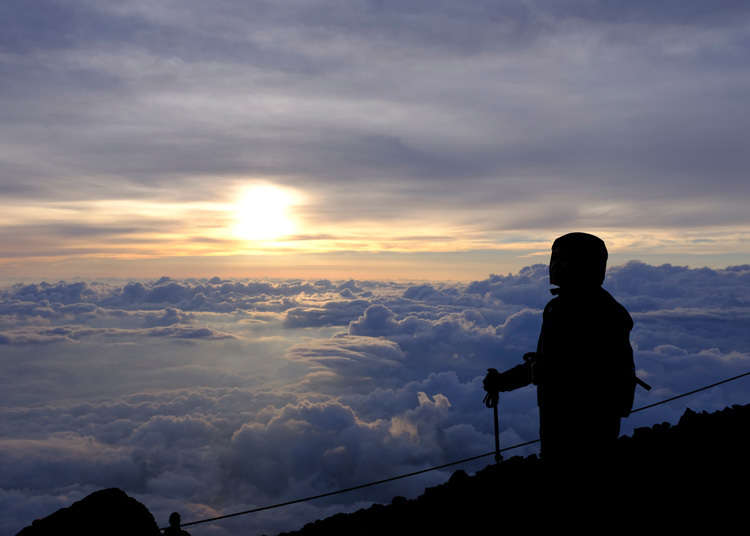
The number of people coming to climb Mt. Fuji - from both Japan and overseas - has been increasing, with nearly 236,000 climbers recorded in the summer of 2019. The day with the highest number of visitors saw as many as 8743 climbers!
However, the more people gather in a single location, the more challenges that can arise.
We interviewed Mr. Yasuhiko Ota, representative director of the Mount Fuji Trail Club, and volunteer Mt. Fuji climbing guide who also conducts environmental protection and safety measures. Mr. Ota recounts past examples of troubles encountered while climbing Mt. Fuji.
Avoid Light Clothing When Climbing Mt. Fuji!
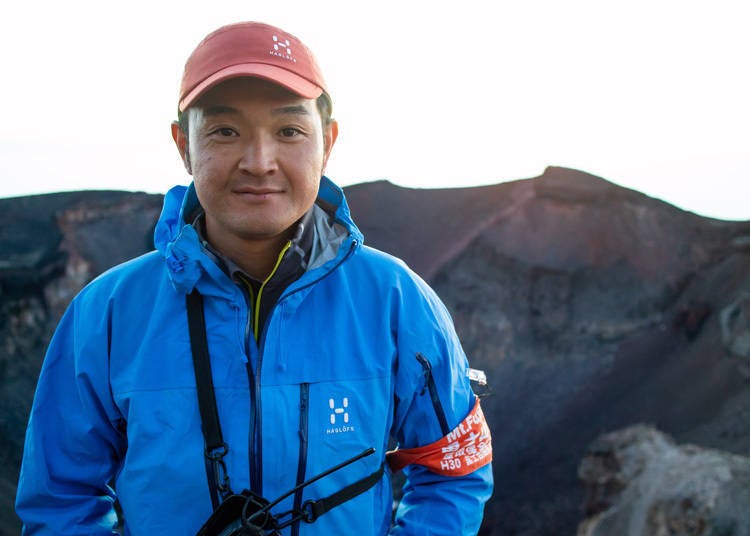
Mount Fuji boasts an altitude of 3776 meters high, and is said to have a temperature difference of 20 degrees Celsius between the summit and the plains.
Summertime is the climbing season. And although there is little snow, temperatures can drop below zero before sunrise. On August 24, 2019, the lowest temperature recorded was minus 2.6 degrees Celsius.
The temperature difference between the 5th Station, where you begin your climb, and the summit of Mt. Fuji, can reach 9°C in the daytime and 13°C or more at night.
Winds tend to be strong on the top of the mountain, and body temperatures can easily drop. Despite this, it seems that there are still many climbers from overseas who do not take proper measures against the cold.
"People need to understand that light clothing is dangerous and should be well-prepared before climbing. Wearing thin vinyl rain gear over your clothes as you would in the city is dangerous on Mt. Fuji. When the weather is bad, damp clothing and strong winds can quickly lower the body's temperature and cause hypothermia.
"Last year, during the Bon Festival, foreign climbers arrived at the summit, wearing only light clothing, resulting in hypothermia (there was no vacancy in the mountain hut). We were fortunate that we just so happened to come across a Yamanashi Prefecture patrol officer at the time. Wearing proper rain gear and taking measures against the cold will help you preserve physical strength and make accurate decisions." (Mr. Ota)
You may sweat a lot while climbing Mt. Fuji; however, when you stop to take a break, you will feel the cold right away. You should wear quick-drying undergarments and winter clothing such as fleece, knit, and down jackets. Rain gear should be made specifically for climbing, with waterproof and breathable material and separate tops and bottoms.
Stay on the Designated Climbing Path!
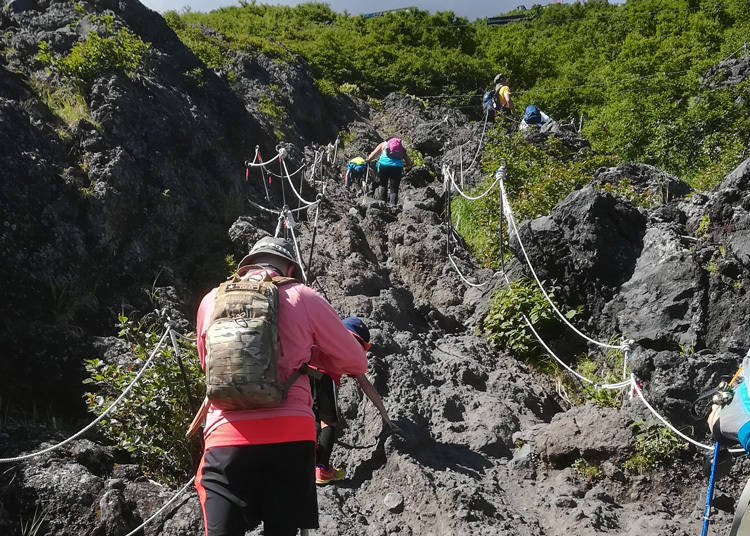
When on a professionally guided mountain climbing tour, you will never be led astray from the trail. However, some solo climbers may violate these rules without much forethought. Some may travel off the course or block the trail for others.
"The climbing trails are well-maintained, and some places are marked by ropes indicating where you may go. Accidents are recorded every year where people venture into unmarked territory, causing rocks to fall and injure other climbers. Last year, a fellow tour guide was injured by a falling rock that struck his head." (Mr. Ota)
There was a terrible incident in the climbing season of 2019 in which a falling rock crushed the chest of a Russian climber, killing her. Though another climber speculated the accident occurred from the woman's own accidental dislodging of the rock herself, nobody could have imagined just how fatal it turned out to be.
"One of the causes of falling rocks is that that some people, whether because of impatience with foot traffic, or tiredness causing them to seek a shortcut, venture off the designated course. There is a reason the ropes are there restricting climbers to the climbing trail. This is one of the most important rules to obey." (Mr. Ota)
As to why some climbers continue to travel off-course, it could be that some are still unaware of exactly why these restrictions exist in the first place. However, going off-course can sometimes result in unfortunate, unexpected situations. Please understand there are important reasons for every rule when climbing Mt. Fuji.
No Tents or Camping on Mt. Fuji: Stay in a Mountain Hut
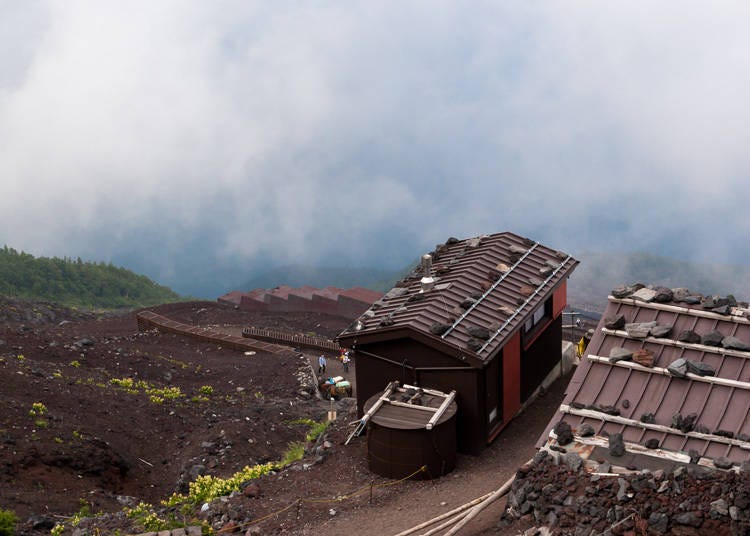
"In the last couple of years, a prominent issue has become climbers bringing and setting up tents. Most of them are foreign tourists. However, they need to understand that bringing tents is prohibited by the Natural Parks Act.
"If you camp in a crowded area, climbers will have to walk around you, and may accidentally cause rocks to fall. At night, you may not notice rocks falling around you, which may hit your tent directly. Also, lighting campfires inside a tent can cause carbon monoxide poisoning and suffocation. Such a situation resulted in an accident about three years ago at the summit. Even the police were called." (Mr. Ota)
There are reasons why pitching a tent on the mountain is prohibited. There are no tent sites on Mt. Fuji. In addition, campfires are also prohibited by law.
Take Your Trash With You
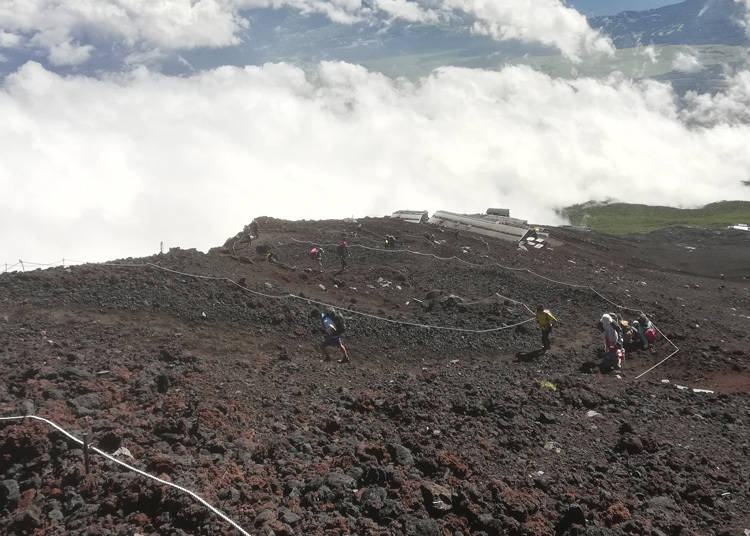
There are no garbage bins on Mt. Fuji.
"In recent years, the issue of garbage left behind by day-trip climbers during the Bon Festival has become serious. Mt. Fuji is in a national park and a special protected area. It is important to protect and preserve the plants, animals, water, and ground. Littering is a huge problem for the environment." (Mr. Ota)
Because the temperature on Mt. Fuji is so low, even things like banana peels and cigarette butts will not break down easily. Make sure to bring a trash bag large enough to take everything with you, not only plastics, but all trash and anything you happen to bring along.
This is another reason why walking off-course is strictly prohibited: not only is it a safety issue, but it may also negatively impact the ecosystem.
"Garbage collection costs a lot of money. We are not able to collect any garbage left anywhere off the climbing trails. The garbage we do collect is brought down to the foot of the mountain by staff members or bulldozers. Please understand that this process is expensive, and refrain from leaving any trash behind." (Mr. Ota)
Also prohibited by law is the collection of flowers, fruits, lava rocks, and pebbles from the mountains, as well as graffiti, such as writing your name into buildings or rocks.
Mt. Fuji was originally a sacred mountain that has long been worshipped by the people of Japan. We should respect the mountain and keep it beautiful and free of trash.
Paying the Toilet Tip

The toilets at Mt. Fuji require a small tip payment of 100 to 300 yen.
Restrooms on the mountain do not have flushing toilets. Water is so precious on the mountain that there is not even a tap installed for washing your hands. Instead, bio-type toilets have been installed, which use sawdust and oyster shells to break down waste.
"Just like I mentioned about the garbage collection, toilets are also brought down the mountain with bulldozers and disassembled using special equipment. People need to understand that this costs a lot. We really appreciate it if you carry and dispose of your own trash." (Mr. Ota)
Toilet waste is processed on-site first and then on the land. The annual maintenance cost of these toilets is around 50 million yen. The tips paid by climbers help cover these costs.
You may see people leaving garbage here, but of course, this is also strictly prohibited. Leaving garbage can cause the toilets to break down.
Keep in mind, if there are many climbers on Mt. Fuji, the toilets can become crowded. It is a good measure to bring your own portable toilet just in case.
Conclusion
Mr. Ota leaves us with some final words of wisdom.
"One of the reasons it can be so difficult to make sure everyone obeys the rules of climbing Mount Fuji is because each person comes from different countries, cultures, and circumstances. My hope is that everyone visiting Mt. Fuji takes the time to learn and understand the rules, and makes advanced preparations for their own protection and safety. By doing so, you will have even more time to enjoy the charms and beauty of Mt. Fuji."
Taking the time to gather and understand information ensures not only your own safety, but the safety of others and the environment around you.
The Official Website for Climbing Mount Fuji is available in English, Chinese, and Korean. Please be sure to refer to this site before planning your trip.
-

-
Address
Fujiyoshida-shi, Yamanashi, 403-0000
View Map -
Nearest Station
Gotemba Station (JR Gotemba Line)
-
Address
Fujiyoshida-shi, Yamanashi, 403-0000
*Prices and options mentioned are subject to change.
*Unless stated otherwise, all prices include tax.
Popular Tours & Activitiess
Recommended places for you
-

Enjoy Japan's Gorgeous Winter Lights! Ride the Romancecar to Shonan no Hoseki Illumination
by: Guest Contributor
-

Get Ready to Catch 'Em All! First Ever Permanent Outdoor Pokémon Park Opening Near Tokyo!
-

2025 Japan Autumn Color Report: Tokyo's Ginkgo Trees Starting to Glow
by: Timothy Sullivan
-

Black Friday 2025: These Are THE Japan Travel & Shopping Deals to Check Out
-
Ad

Walk in the Footsteps of Believers: A 4-Day Pilgrimage Across Goto Islands, Nagasaki Prefecture
by: Yohei Kato
-

2025 Autumn Colors Report: Kurobe Gorge Nearing Peak
by: Timothy Sullivan
Inspiration for Accommodations
-

Enjoy Mt. Fuji from the Comfort of Your Room! Recommended Ryokan with Mt. Fuji View
-

Stay Near the Cherry Blossoms! Hotels for Cherry Blossom Viewing in Tokyo
-

Family-Friendly Hotels with Free Shuttle to Disneyland: Convenient Access for a Magical Stay
-

Top Ranked Hakone Hotels with Mt. Fuji View: Enjoy Stunning Scenery from Your Private Space
-

Convenient Tokyo Hotels with Airport Shuttle: Ideal for Families and Heavy Luggage
-

Stunning Tokyo Tower View Hotels: Enjoy Spectacular Scenery from Your Private Space
-

Convenient Asakusa Hotels with Kitchens: Ideal for Extended Family Visits
-

Experience Luxury: Hakone's 10 Best Five-Star Accommodations
-

Enjoy Mt. Fuji Autumn Leaves! Top Hotels Near the Popular Autumn Leaves Corridor
-

Experience Hakone Fall Foliage from Your Room with Stunning Views
-

Tokyo Train Map: Your Essential Guide to Subways and Railways
-

Easy Day Trip from Tokyo! Ultimate Sightseeing Guide for Hakone & Lake Ashinoko!
-

Japan's Sweet Souvenirs: Top 10 Sweets at Ueno Ameyoko’s Niki no Kashi
-
Ad

Explore Shinjuku: The Coolest Neighborhood Where Old Tokyo Meets Modern Tokyo!
-

No Fish For You? 15 Non-Fishy Japanese Foods You Didn't Know Existed!
by: Lucio Maurizi
-

Complete Guide to Buying Japanese Medicine in Japan: Phrases and Vocabulary You Need to Know
- #best ramen tokyo
- #what to buy in ameyoko
- #what to bring to japan
- #new years in tokyo
- #best izakaya shinjuku
- #things to do tokyo
- #japanese nail trends
- #what to do in odaiba
- #onsen tattoo friendly tokyo
- #daiso
- #best sushi ginza
- #japanese convenience store snacks
- #best yakiniku shibuya
- #japanese fashion culture
- #best japanese soft drinks



















